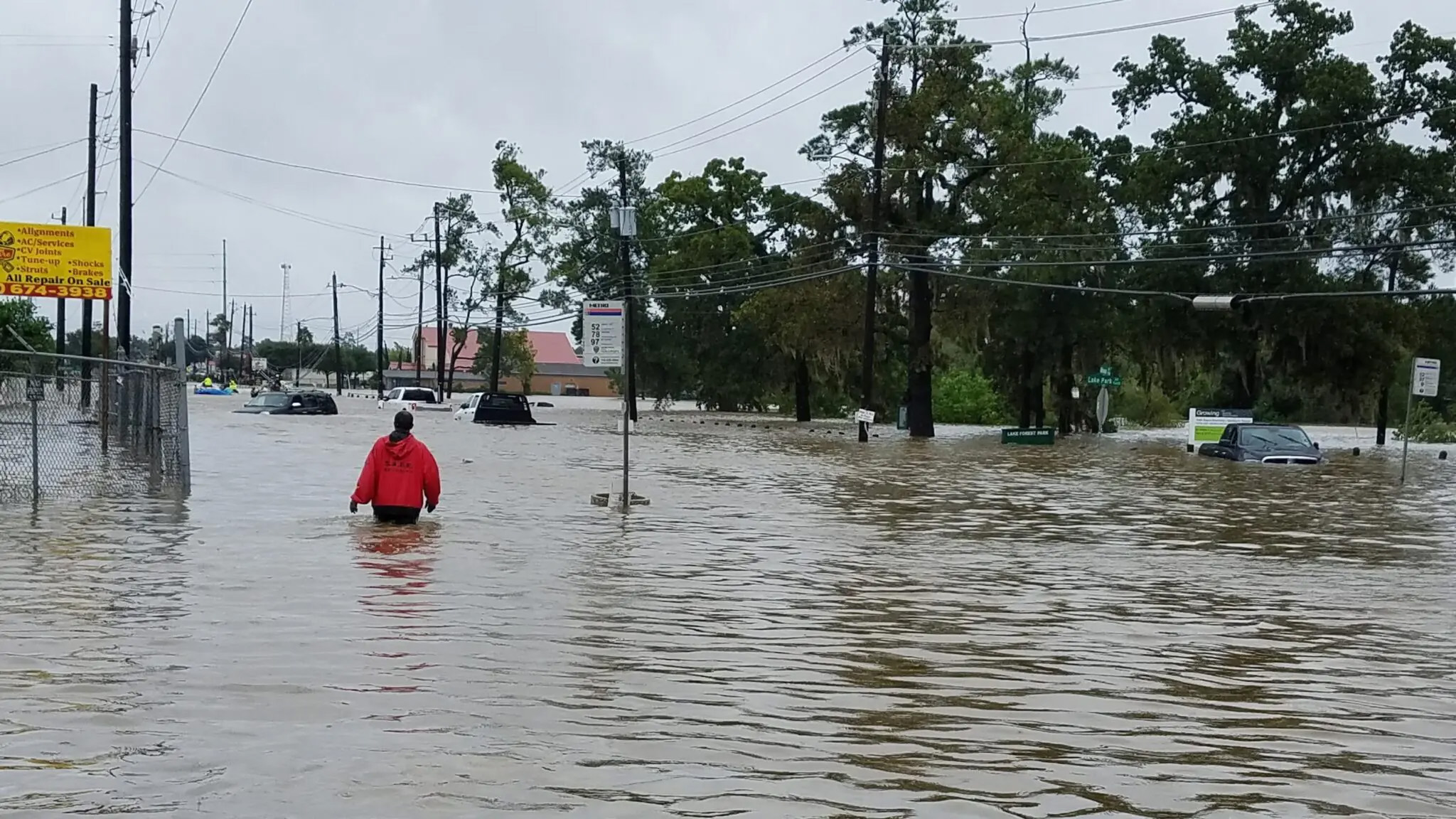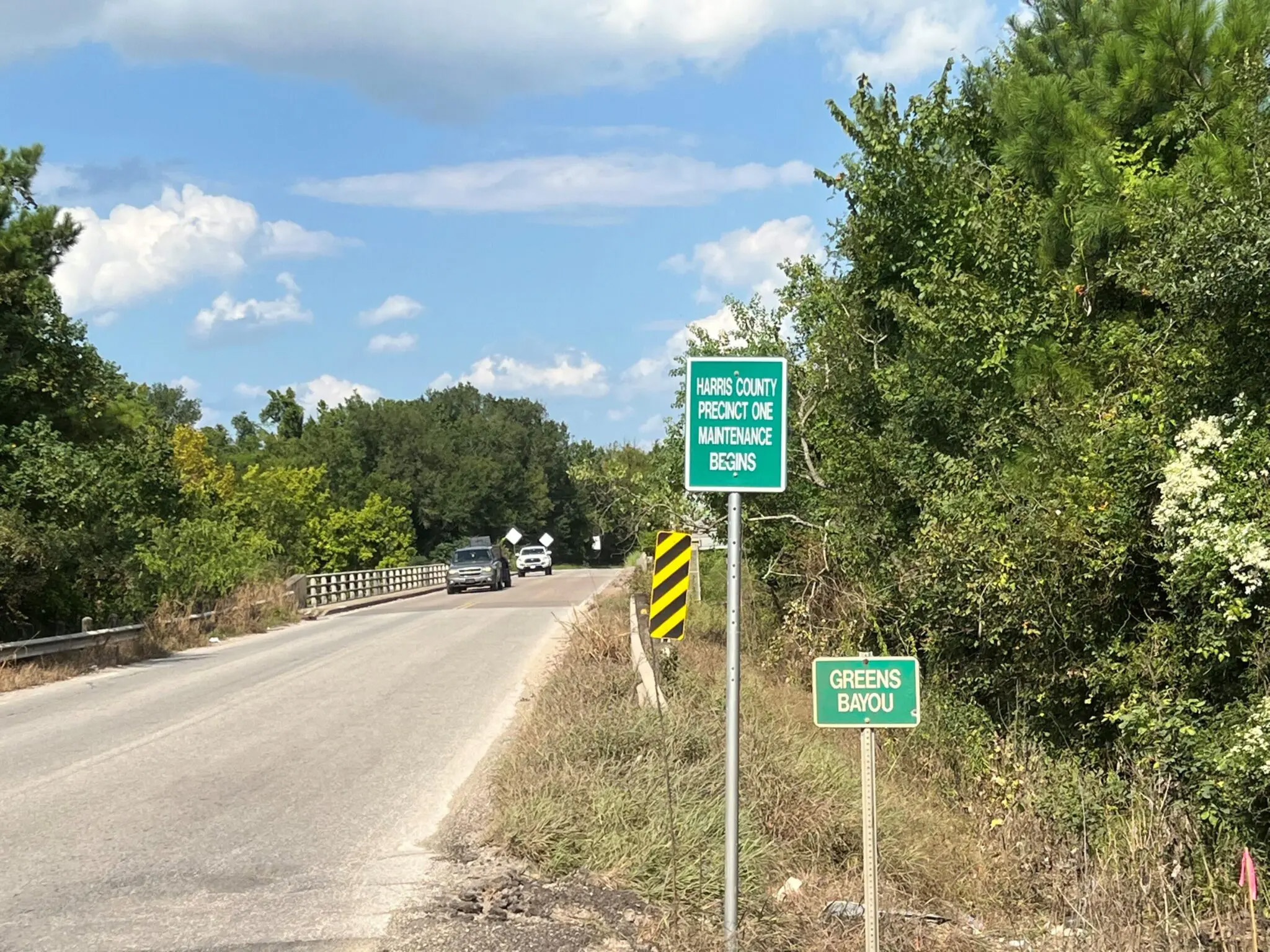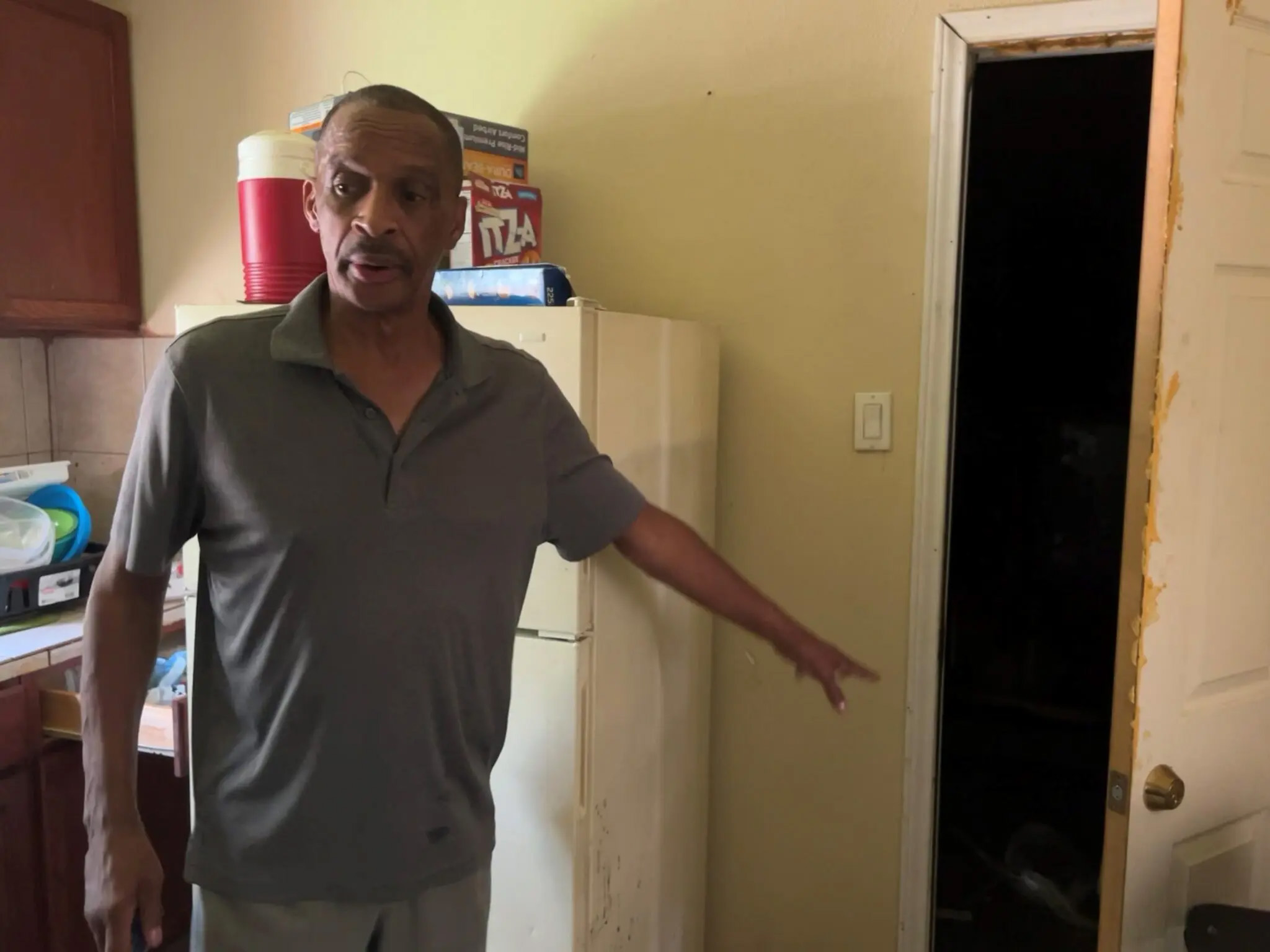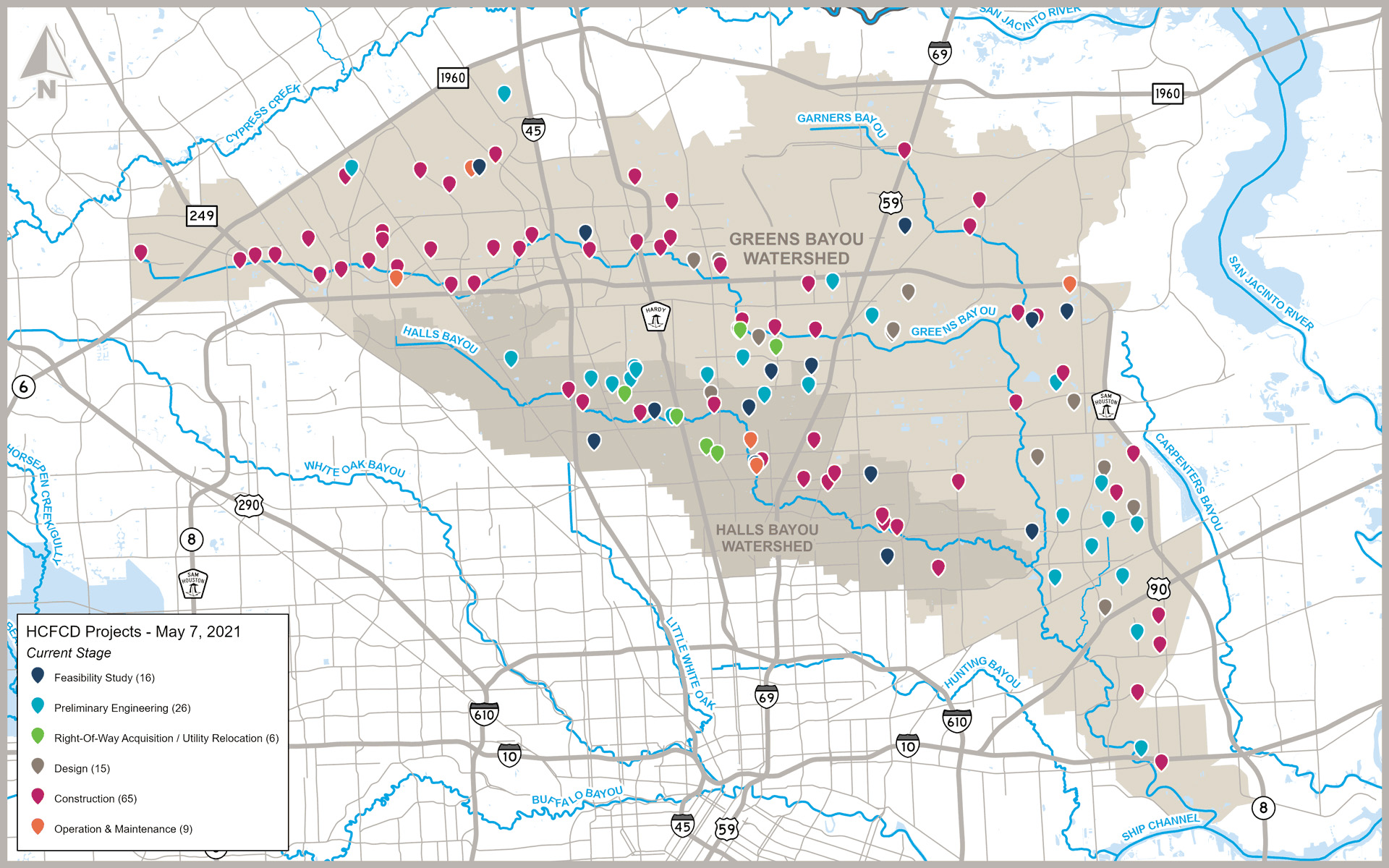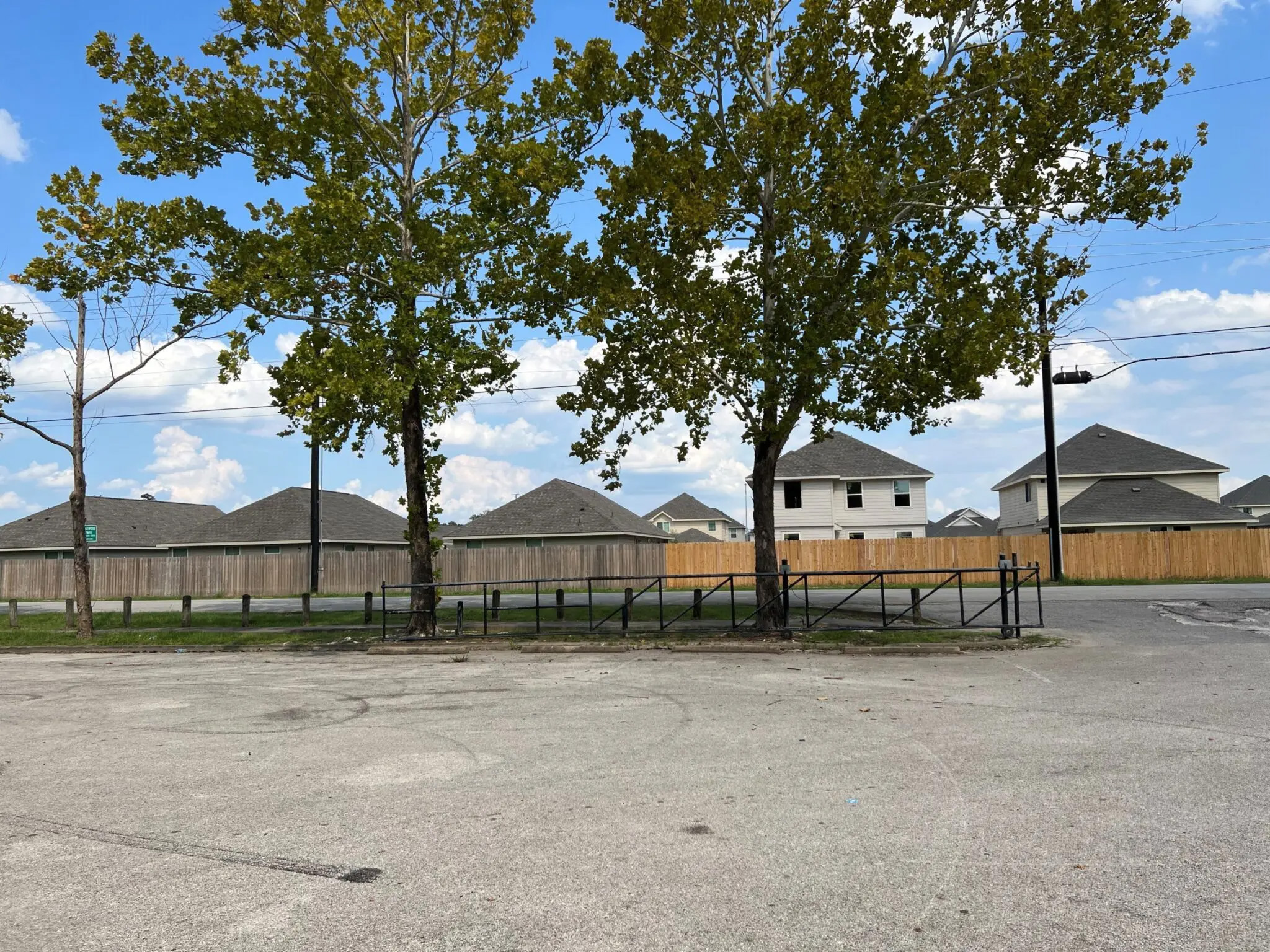Do you live in the Greens or Halls Bayou watersheds? What has your experience with flooding been? Tweet your answers to @Aschneider_HPM
The Greens Bayou watershed in north and east Harris County covers 212 square miles and is dense with households. It floods regularly, but it has long been shortchanged on flood control spending.
Juan Antonio Sorto, a longtime East Houston resident, drove his SUV toward a bridge over Greens Bayou. The bridge marks the border where the city of Houston ends and unincorporated Harris County begins.
“This is where the family got swept away,” Sorto said.
On Sunday, August 27, 2017, at the height of Hurricane Harvey, a family of seven tried to drive across the bridge when their van slipped backwards into the floodwaters. Six members of the family, Belia and Manuel Saldivar and four of their great-grandchildren, drowned.


